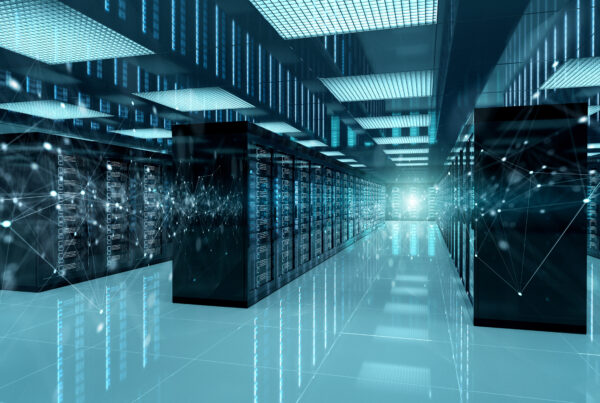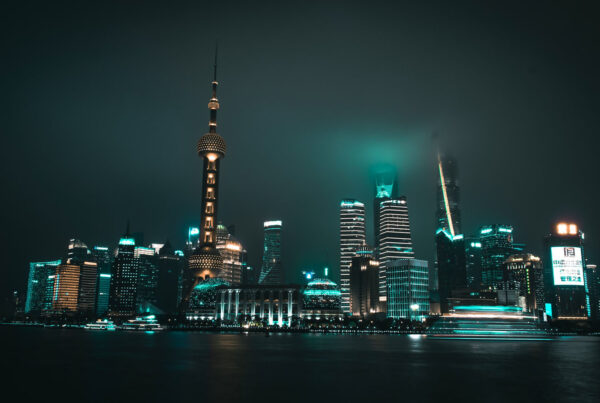Getting the Asian digital economy on the winning side of the environment
The region’s digital economy is growing at an unprecedented pace. While the positives associated with the rise of the digital economy are well-documented, the risks governing the proliferation of the digital economy need further strategic thought and response. Think climate volatility and sustainability and the region’s race to net-zero.
Harnessing sustainable energy systems and strengthening resilience in the region’s digital transformation journey will lead to a more secure regional socioeconomic and environmental future.
Regional Dynamics and the Need for Accelerated Action
In terms of primary energy demand and consumption, Asia is one of the fastest-growing regions in the world. The Asian economic and trade bloc has a huge untapped potential for renewables and regional power grids and networks can go a long way in developing scalable capacity, boost access, and promoting broader regional economic integration.
For example, India can help neighboring countries with low-cost solar and wind power. Indonesia ranks among the Top 5 countries in APAC with the highest share of renewables in total final energy consumption, largely driven by hydropower and bioenergy [1]. China, India, Japan and Bangladesh continue to be at the forefront of renewable energy development [2]. In fact, China and India alone account for 28 percent of the global primary energy supply [3].
Data Centers: More Than Just Power
The Global Renewables Outlook report from the International Renewable Energy Agency (IRENA) reports that the Southeast Asia region could meet 41% of its energy requirements from renewable sources by 2030 [4] while creating 6.7 million new green jobs by 2050. With greater economies of scale, the cost of renewables can compete with traditional sources such as coal-fired power plants.
There is a clarion call for more targeted investment in areas such as grid improvements, energy storage systems, and renewable energy integration technologies. Singapore’s SP group, for example, is testing technology that helps transfer energy from batteries of parked electric vehicles back to the grid.
Similarly, as part of a through-cycle focus, ESG goals and commitments could become even more critical to investors than short-term financial targets. We see that shift in how investment houses are putting a lot of emphasis on sustainable investing strategies. According to MorningStar’s first Global Sustainable Fund Flows report, sustainable funds globally attracted an estimated $45.7 billion in net flows during the first quarter of 2020. The growing climate crisis has made the idea of sustainable investing or ESG more relevant.
The focus on environmental issues will continue to grow as the region processes and consumes more data, spurred by the growing application and use of the Internet of Things (IoT), artificial intelligence, and 5G. This data explosion, dovetailed with the rapid growth of hyperscalers and cloud companies has resulted in a sharpened focus on how the data center industry manages the environmental impact.
In this context, the business case for data centers, the infrastructural backbone of the digital economy, also becomes even more compelling. The good news is that mitigating environmental impact is an effective strategy for data center companies anyway –customers demand it, governments encourage it and employees also want to work for companies that are environment-conscious. This ties in well with investors’ focus on ESG.
Princeton Digital Group (PDG): Incorporating the Environmental Factor in the Investment Process
PDG is implementing a comprehensive program aimed to manage and reduce our environmental impact, centered around four key areas.
First, the use of renewables is a critical lever to reduce environmental impact. PDG is a pan-Asian company with presence in China, India, Indonesia, Singapore, and Japan, allowing us to work towards leveraging various country-specific opportunities and capitalize on available renewable resources. PDG was the first corporate buyer of PLN’s (Indonesia’s State Electricity Corporation) Renewable Energy Certificate (REC) services, which recognize the use of electricity from renewable sources. This procurement instrument enables us to meet transparent renewable energy use targets as well as encourages the growth of the national renewable energy market in Indonesia.
Second, our customers need power for their servers and equipment, and we require additional supply to maintain a controlled standardized environment for their infrastructure. We have measures in place that can significantly ensure the quantum of power required to maintain temperatures and humidity are within optimal levels. The standard industry measure for this is the Power Utilization Efficiency (PUE) metric – showcasing the level of energy the computing equipment uses, relative to the energy usage to support the environment in which it operates. Power is one of the most critical cost components in a data center business it is imperative that we focus on operational efficiency and ensure that we deliver sustainable services in an efficient and reliable manner.
Third, some of our customers already have advanced equipment capable of operating in relatively higher temperature ranges. This makes a significant impact on PUE (as it takes less power to maintain a higher temperature range). While the optimal PUE metric is often determined at the design stage, it takes best-in-class engineering and operations to run data centers at their design PUE. Ensuring a team of talented and experienced professionals with an industry track record helps in achieving this. Committed to attracting, developing and retaining talents, PDG offers internship programs and collaborates with universities to provide training and educational programs to help contribute to talent development in the industry. PDG is partnering with Facebook and CBRE to focus on the development of data center professionals, working with NTU in contributing and driving content and syllabus for the PaCE@NTU program – aimed at right-skilling and developing the talent for the growing data center industry [5].
Fourth, our capital expenditure budget for each facility factors in the construction and procurement of cooling technology and electrical equipment to minimize carbon footprint. Our environmental policies in building self-sustainable data center concept designs are extended to the vendors with whom we work because our approach also impacts other players in the supply chain, and we aim to create green digital infrastructures for our customers, partners, and investors.
We believe the region is at the cusp of an upheaval in sustainable practices and we will see more innovation in this area – to drive a multi-impact and lifecycle approach to agility, adaptability, and resilience in building tomorrow’s digital economy.








